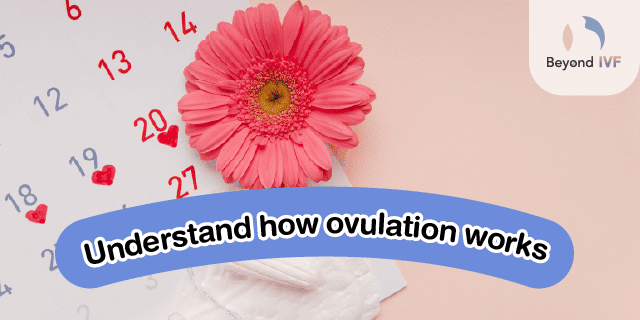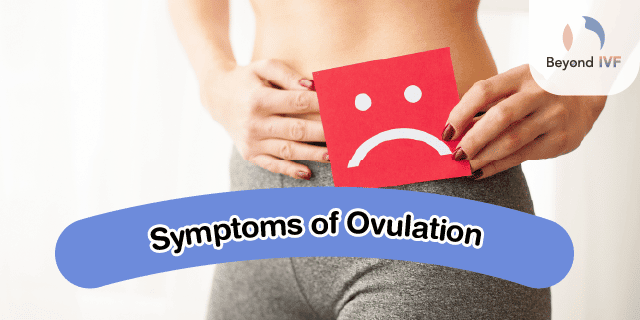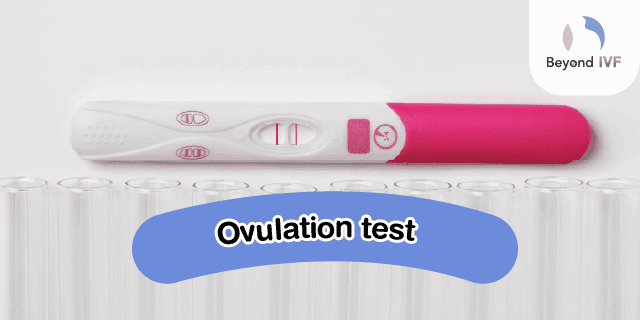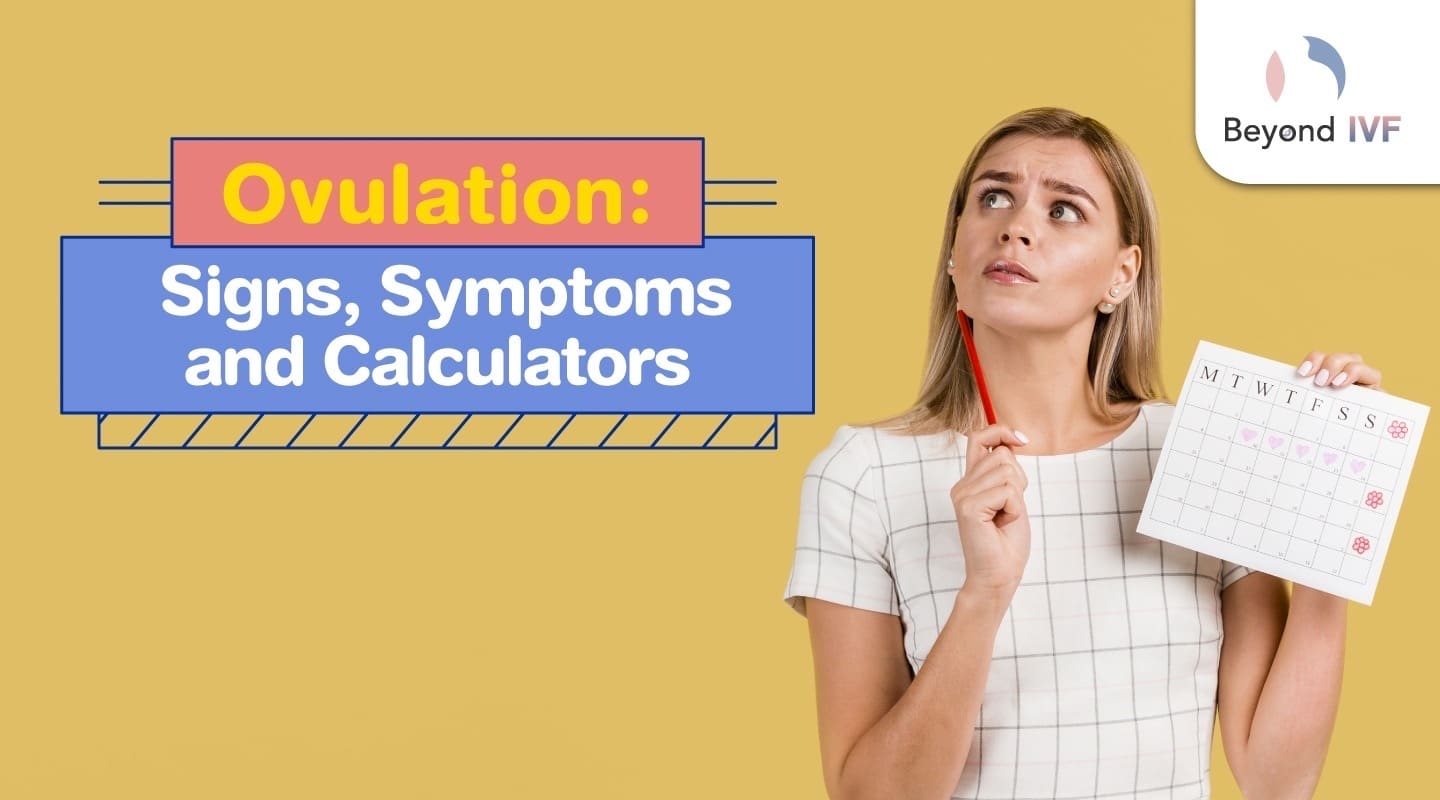If you are trying to have a baby, the best time to have sexual intercourse is during ovulation to increase the chances of pregnancy. But how to tell when ovulation occurs? What symptoms occur as ovulation comes closer and how does the body respond to changing hormones?
- What is Ovulation?
- Phases of Menstrual Cycle
- Understand how ovulation works
- Signs of Ovulation
- How long does ovulation last?
- Symptoms of Ovulation
- How to know if you’re ovulating?
- Tracking your ovulation
- Health conditions that might affect ovulation
- Irregular Ovulation
- Ovulation test
- Who might need an ovulation test?
- Conclusion
What is Ovulation?
Ovulation is the process in which a mature egg is released from the ovary into the fallopian tube to be fertilized by sperm. Ovulation occurs once a month in healthy women. The first day of a woman’s period is considered the beginning of her cycle. Follicle-stimulating hormone (FSH) is released by the body on days 2 to 14 of the cycle to help the egg mature and to thicken the uterine lining in preparation for pregnancy. This is the pre-ovulatory (or follicular) phase.
Ovulation usually occurs between days 11 to 21 of the cycle. During this phase luteinizing hormone (LH) increases and there is more cervical mucus in the vagina to help the sperm travel to the egg. If the egg is unfertilized, the uterine lining will be shed during menstruation.
Phases of Menstrual Cycle

1. The follicular phase
This is the phase before menstruation. The pituitary gland releases follicle-stimulating hormone (FSH) to help the egg mature before it is released during ovulation. As the egg grows it released estrogen to thicken the uterine lining in preparation for pregnancy.
2. The ovulatory phase
The pituitary gland will produce luteinizing hormone (LH) to move the egg and other cells from the ovary into the fallopian tube. This is when a woman is fertile and the egg is ready to be fertilized by sperm.
3. The luteal phase
If fertilization occurs, an embryo will implant in the uterine lining and pregnancy will occur. If the egg is not fertilized, the uterine lining will be shed as blood from the vagina in the process of menstruation. This is the first day of the cycle.
Understand how ovulation works

Only one mature egg is released each month and so it is important to take advantage of this if you are trying to conceive. If you miss this cycle you will have to wait for the next one. A woman’s body has approximately 200,000 to 500,000 eggs in a lifetime, but only 400 to 500 eggs can lead to pregnancy.
Each month the hormones that manage ovulation are estrogen, progesterone, luteinizing hormone (LH), and follicle-stimulating hormone (FSH). These hormones produce eggs and select the one healthiest egg to be released. This egg only lasts 24 hours as it waits to be fertilized. If it is not fertilized in time, it will be released along with the uterine lining in menstruation.
Signs of Ovulation
- Cervical mucus changes in ovulation and is an egg white consistency and sticky due to the release of progesterone. The mucus in the vagina will be clear and slippery to help sperm travel more easily to fertilize the egg.
- Breast tenderness is the main symptom of ovulation, caused by changing hormones, but breast tenderness does not always indicate ovulation.
- Higher body temperature occurs during ovulation as there is an increased production of progesterone.
- Increased libido occurs due to more blood being sent to the vagina. There is also an increase is sexual attractiveness due to subtle behavioral cues from the woman or possibly due to the production of pheromones during ovulation.
- The cervix is high, soft, wet, and open during ovulation.
- Abdominal cramping can occur as the ovary expands to accommodate the mature egg and when the uterine lining is shed, leading to constipation and abdominal tightness.
- Heightened sensitivity can happen during ovulation and some people are more sensitive to smells and tastes; some people are more easily frustrated due to changing of hormones.
How long does ovulation last?
Ovulation lasts 12 to 24 hours. However, the egg can be fertilized for up to 6 days since sperm can survive in the body for up to 5 days. If you have sexual intercourse 5 days before ovulation, there is a chance of pregnancy.
Symptoms of Ovulation

Generally, symptoms of ovulation include:
- Some people experience abdominal pain (mittelschmerz) or pelvic pain from the ovary expanding and the release of mature egg.
- Body temperature increases in the morning and then decreases and increases in the 24 hours after ovulation.
- Increased vaginal discharge that is clear and has an egg white consistency
- Cervix is softer and more open
- Increased libido
- Many people experience breast or nipple tenderness during ovulation.
- While not a common symptom, some women experience bloating during ovulation.
- Dry mouth before or during ovulation
- Vaginal swelling
- Vaginal spotting
- Pain on one side of the abdomen, usually mild
How to know if you’re ovulating?
- Tracking your cycle is an easy way to determine when you are ovulating and works best if you have regular periods as ovulation is likely to occur at the same time every month. Record the first day of your period and the last day. Ovulation usually happens 14 days before your period starts so simply count backwards 14 days from the first day of your period. This method is not the most accurate as ovulation can sometimes occur outside of the 14-day window.
- An ovulation kit measures the luteinizing hormone (LH), which is a clear indicator of ovulation. The LH increases dramatically 10-12 before ovulation. The level increases for 14-27 hours on the 14th to 15th day of your cycle to help the egg mature. The test involves placing urine on the test stick and comparing the results to the provided handbook to see how the color on the stick compares to the color that indicates ovulation. If the color isn’t clear or if you’re not sure you’re ovulating, test again within 12 hours. The test should be done at the same time each day for the most accurate result. Avoid drinking water for four hours before taking the test so the urine is concentrated and it is easier to measure LH.
- Measuring body temperature can also be a way to find out when you are ovulating. Normally your basal body temperature (BBT) is steady in the first part of your cycle, but as you get closer to ovulation, your body temperature will drop slightly and then increase suddenly by 0.4 to 1 degree Celsius. Use a thermometer to take your temperature as soon as you wake up every morning. There may be a slight difference in the temperature each day, but when temperature starts to increase consistently, ovulation is around the corner. If you are planning to become pregnant, record your temperature when you ovulate each month to find the best times for sexual intercourse that have a high chance of leading to pregnancy.
- Most women will have vaginal discharge every month that changes in amount and consistency throughout their cycle. Mucus increases as you get closer to ovulation and is clear and stretchy, like egg white.
- A fertility monitor can indicate the 5 most fertile days in a month by measuring LH and estrogen levels.
- Since ovulation causes many different symptoms, recording all the changes you experience through your cycle, such as pain in the middle of the abdomen or on one side, can help determine when ovulation happens. However, different people will experience different symptoms (or none at all) so combine tracking symptoms with another method for the most accurate results.
Tracking your ovulation
Normally a mature egg that is released for fertilization will only last 12-24 hours. If fertilization happens during this window, wait 12-14 days to see if you have a period. If you don’t have a period you can take a pregnancy test. If you do have a period 12-14 days after ovulation, you might not be pregnant this cycle.
Health conditions that might affect ovulation
- Polycystic ovarian syndrome (PCOS)
PCOS refers to a group of symptoms that can lead to irregular ovulation or anovulation (where you don’t ovulate at all). The ovaries usually have numerous small cysts in them. The exact cause of PCOS is not known, but it occurs frequently in women of reproductive age.
- Premature ovarian failure or primary ovarian insufficiency (POI)
POI is when the ovaries stop functioning before the age of 40. When the ovaries don’t work, estrogen cannot be produced normally or ovulation may be irregular or not occur at all, making pregnancy difficult.
- Diminished ovarian reserve (DOR)
When you have fewer eggs, it is more difficult to become pregnancy naturally. It is not just age that can cause you to have fewer eggs or eggs of good quality. There are other factors that can lead to DOR, such as:
- Smoking
- Cancer treatments like radiation, chemotherapy, and surgery that impacts the ovaries
- Diseases of the fallopian tubes
- Pelvic inflammatory disease (PID)
- Genetic abnormalities
- Problems with your immune system
- Abnormalities of the hypothalamus and pituitary gland
The hypothalamus produces hormones to stimulate and inhibit the function of the anterior pituitary gland as well as produces hormones of the posterior pituitary gland. High levels of prolactin (produced by the pituitary gland) cause amenorrhea and infertility, and can lead to lack of female hormones.
- Hormonal imbalance
Gonadotropin-releasing hormone (GnRH) is produced by the hypothalamus to stimulate production of FSH, which helps the egg mature.
- Follicle-stimulate hormone (FSH) stimulates the maturation of the egg. FHS directly affects a woman’s cycle. If FSH is too low (often found in PCOS) or too high (found in premature menopause), it can lead to infertility.
- Luteinizing hormone (LH) is produced naturally by the pituitary gland and is part of a group of hormones called gonadotropin. LH stimulates the ovaries. If LH levels are too high, it can indicate premature ovarian failure.
Irregular Ovulation
Ovulation disorder is caused by dysfunction of hormones. This leads to eggs developing abnormally and prevents ovulation. Symptoms of ovulation disorder varies from person to person. Some may still have regular periods while some will have irregular periods or none at all.
Chronic anovulation increases the risk of complications, such as endometrial cancer. It can also lead to infertility. Life-threatening edema can occur during ovarian stimulation if not monitored carefully and treated.
Ovulation test

There are two main ways to determine when you ovulate.
- Tracking your cycle is an easy way to determine when you are ovulating and works best if you have regular periods. Normally a period happens every 28 days and using the first day of your period as day 1, ovulation occurs on day 14. To conceive, have sexual intercourse 1-2 days before ovulation. (This method works best for women whose periods are very regular each month.)
- An ovulation kit is fairly accurate. It is like a pregnancy test in that it uses urine to test hormone levels. It is best used 10-12 days after your period starts. If one line appears on the test, you are not ovulating yet. If two lines appear, you are ovulating. The best time to take the test is between 2 pm and 8 pm because that is when LH is most concentrated. (This method works best if your periods are irregular.)
Who might need an ovulation test?
Tracking your cycle is the first step in planning to become pregnant, especially if you are healthy, have just gotten married, or are just starting to try to get pregnant. Having sexual intercourse when you’re ovulating increases your chances of becoming pregnant without needing to see a doctor.
However, if you have been trying to become pregnant for over a year and have been unsuccessful, tracking your cycle is no longer recommended. Most healthy people will get pregnant within one year of trying.
In this case it is better to see a doctor for a thorough assessment to figure out why you are not getting pregnant and screen for other health conditions that might be impacting your fertility. The doctor can then provide the most appropriate recommendation for your unique situation.
Conclusion
Tracking your cycle to find out when you ovulate is just one way to increase your chances of becoming pregnant. It doesn’t guarantee that you will become pregnant that month as there are many other factors that impact fertility, such as your health, your stress level, your daily activities, and so on.
If you are planning to become pregnant, beyond tracking your cycle, notice symptoms of ovulation so you can have sexual intercourse at the right time of the month. For more certainty, see a fertility specialist for expert recommendations to ensure the highest chances of a successful pregnancy.
If you have any questions, please drop by Beyond IVF for a consultation or add us on Line at @beyondivf.









